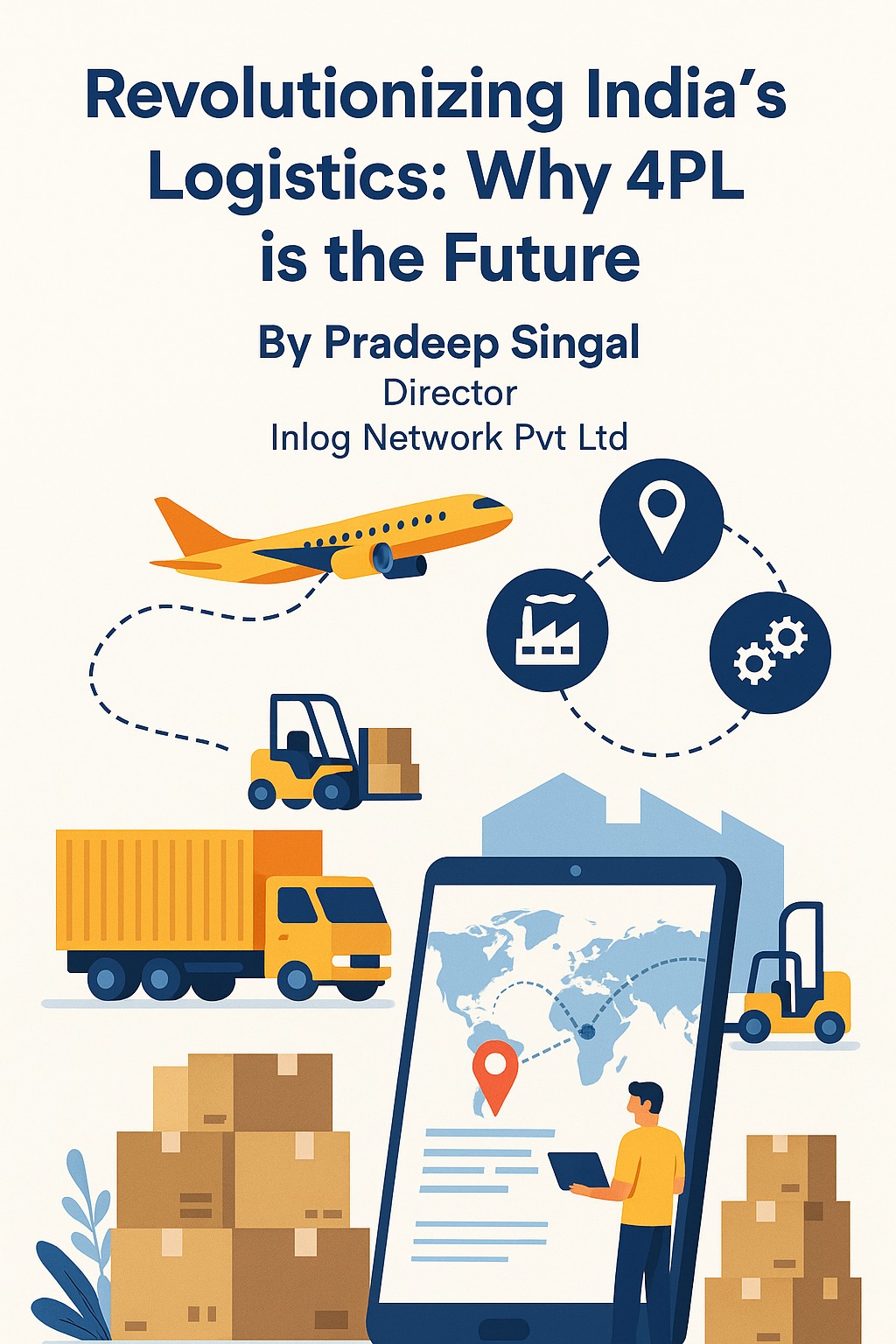Our view on the world of logistics
Here you can find all of our latest insights and an introduction to the world of collaborative logistics - there's something for you.

Revolutionizing India’s Logistics: Why 4PL is the Future
- By Inlog / April 22nd
Revolutionizing India’s Logistics: Why 4PL is the Future
By Pradeep Singal
Director
Inlog Network Pvt Ltd.
www.inlognetwork.com
India’s logistics landscape is a complex web, vital to our nation’s economic growth but currently grappling with significant fragmentation. As someone deeply involved in understanding and analyzing logistics trends, I’ve seen firsthand the challenges we face. Today, I want to discuss a transformative solution: Fourth-Party Logistics (4PL).
Our logistics market is characterized by a multitude of small and medium-sized enterprises (SMEs) operating independently, especially in warehousing and transportation. This fragmentation leads to higher costs—13-14% of our GDP compared to around 8% globally—limited visibility, and inconsistent service quality. Think about it: many businesses still manage relationships with multiple 3PL providers, each with its own geographical or service-specific focus. This creates a disjointed system, hindering efficiency and competitiveness.
So, what is 4PL? Unlike 3PL, which manages specific functions like transportation or warehousing, 4PL takes a holistic approach. It acts as a central orchestrator, managing the entire supply chain from start to finish. This includes strategic design, technology integration, and vendor management—essentially, becoming a single point of contact for all logistics-related activities. Importantly, 4PL providers typically don’t own physical assets like trucks or warehouses. Instead, they leverage the best-in-class providers to meet client needs.
The benefits of adopting a 4PL network in India are substantial. First, we can expect significant cost reductions. Optimized transportation routes, better warehousing, and negotiated rates due to aggregated volumes will drive down expenses. Second, enhanced supply chain visibility will allow for real-time tracking and proactive risk management. Imagine knowing exactly where your goods are at any given moment! Third, we’ll see improved service quality and reliability, moving away from the inconsistencies caused by the fragmented market.
Technology plays a crucial role here. AI, IoT, blockchain, and data analytics can optimize routes, predict demand, and manage warehouses efficiently. These technologies are the glue that binds the fragmented elements of the logistics market under a cohesive 4PL network.
Of course, implementing 4PL won’t be without its challenges. We need to ensure technology adoption across the sector, especially among smaller players. Infrastructure improvements and regulatory streamlining are also necessary. But the opportunities are immense. Government initiatives like the National Logistics Policy and PM Gati Shakti are paving the way for an integrated logistics ecosystem. The booming e-commerce sector further fuels the demand for efficient, end-to-end logistics solutions.
Looking at global examples, companies like Unilever, Caterpillar, and HP have successfully implemented 4PL models, achieving significant cost reductions and efficiency gains. These success stories show us what’s possible.
In conclusion, a 4PL network is not just a beneficial addition; it’s a necessary evolution for India’s logistics sector. By addressing the inefficiencies of a fragmented market, 4PL can unlock the full potential of our logistics capabilities, driving economic growth and global competitiveness. It’s time for India to embrace this strategic approach and build a robust, 4PL-enabled logistics ecosystem.
